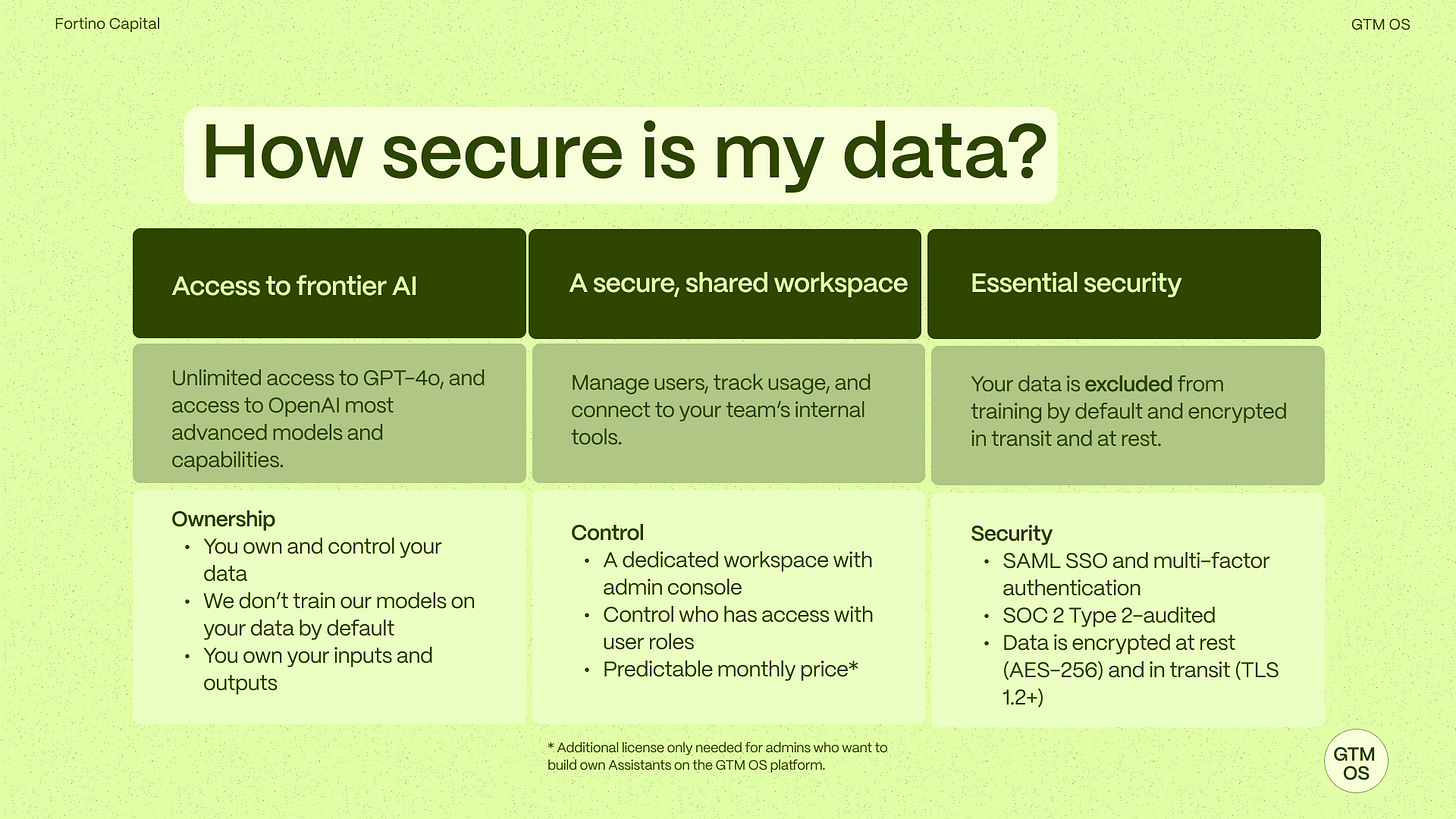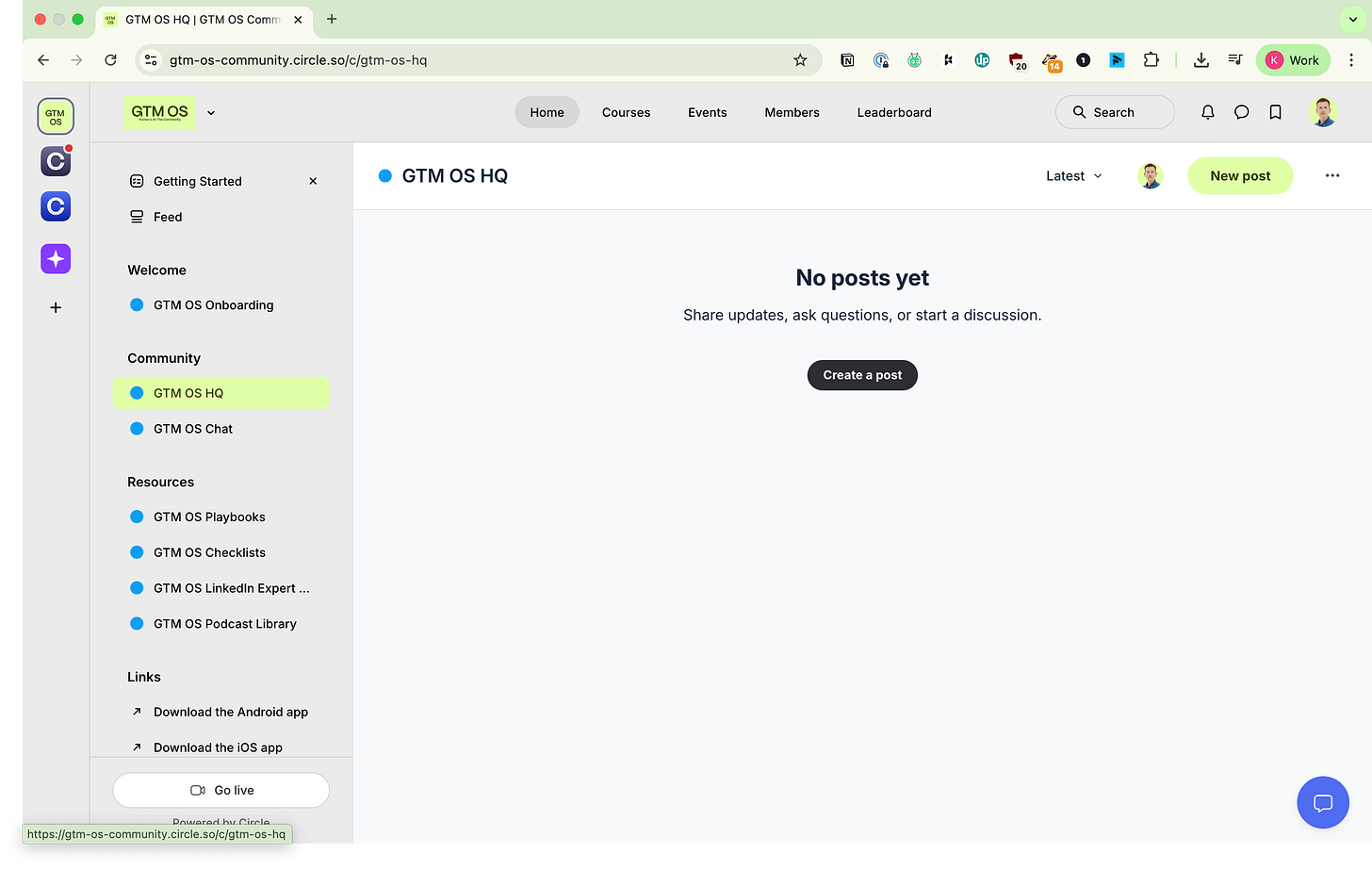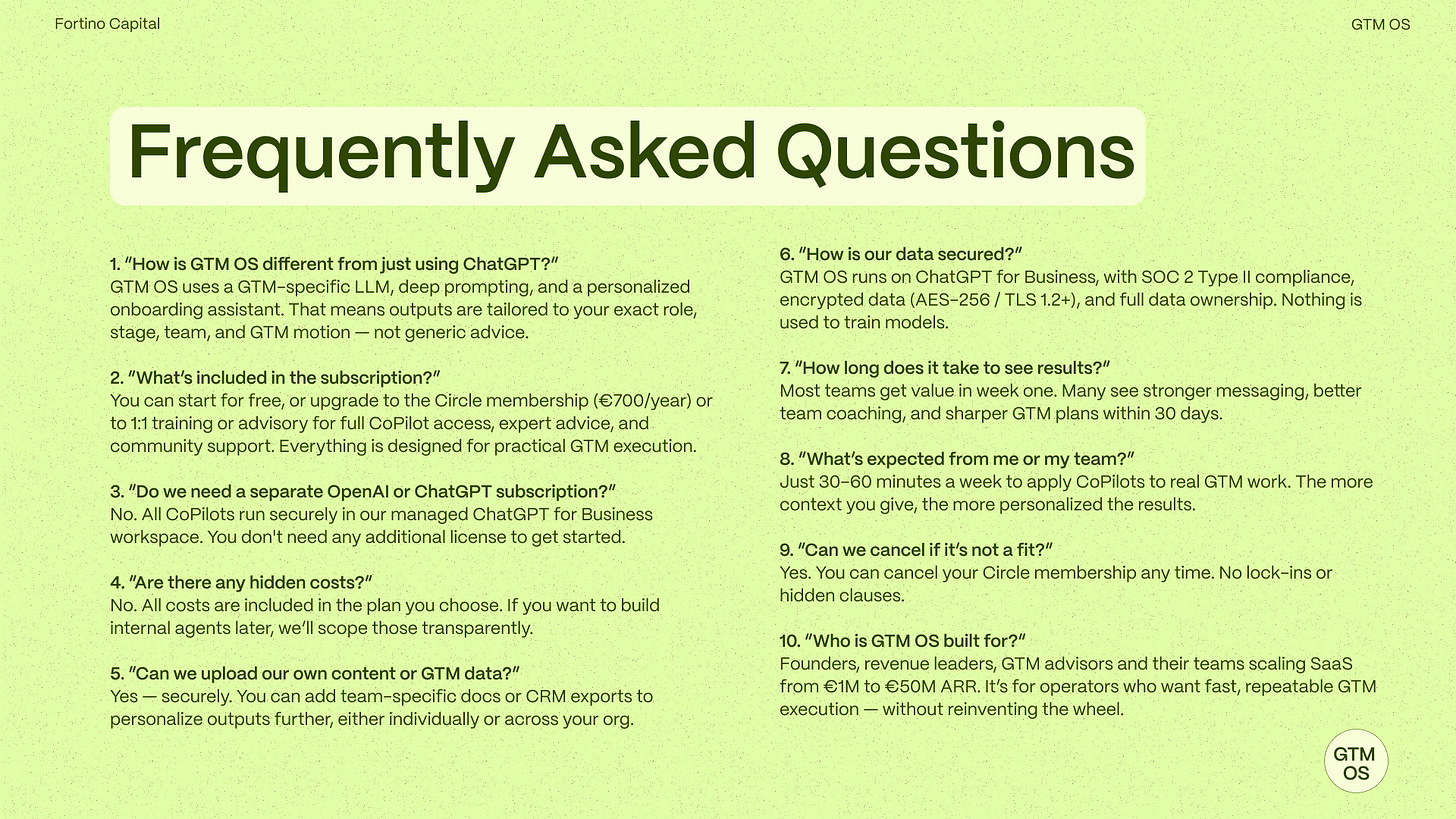TL;DR
We hosted the first GTM OS workshop last Thursday with Fortino Capital and 10 revenue leaders
The next unlock: the onboarding assistant builds your personal GTM OS member profile, the foundation for all assistants
From there, every output becomes (more) specific, relevant, and execution-ready to your GTM context
This is what makes GTM OS different from generic AI tools. It knows your motion, your struggles, your goals
The private group format has started and will be a core part of GTM OS going forward
Why we’re not building another tool
Let’s be honest, 99% of AI tools feel generic.
The inputs are vague.
The outputs are one-size-fits-all.
And nothing feels grounded in your real GTM struggles.
That’s what we tested and validated in the first GTM OS workshop last Thursday with Fortino and 10 GTM leaders.
We started by building each participant’s GTM OS member profile using the onboarding assistant.
And from that single input flow, everything changed.
The power of the member profile
The onboarding assistant asks 15 high-signal questions:
Your motion.
Your role.
Your team size.
Your personas.
Your channels.
Your biggest revenue bottleneck.
With those answers saved, every other assistant inside GTM OS becomes smarter:
The Playbook Assistant is no longer generic, it adapts to your GTM context
The Checklist Assistant is relevant to your specific GTM challenge
The LinkedIn Content Assistant writes to your actual buyers
This is the big shift:
From generic prompting → to GTM-specific execution
From scattered tools → to one system personalized to you
This profile becomes your unique persona because the outputs are only as good as the context they’re built on.
Why it matters: founders and revenue leaders don’t have time to guess
If you’re scaling MRR, you can’t afford generic advice.
What you need is:
A system that knows your GTM motion
Tactics that are proven, but tailored
Execution outputs you can trust, not tweak for hours to tailor
And that’s what GTM OS proved in this first workshop:
When the assistants know you, the output is relevant from the start.
We’re not here to replace people but to help them scale what works.
What’s next: more workshops, more co-creation
The private group format worked.
Everyone came with different bottlenecks — outbound, messaging, pipeline velocity — but the moment we connected their context to the right assistant, the experience clicked.
So here’s what’s coming:
More private GTM OS workshops (next round in August and September)
Co-building new assistants based on real challenges shared (member’s input is fuel for the next serie of GTM assistants
Deepening the onboarding assistant so it becomes the spine of every interaction (learning from all shared feedback within the community)
And as of now, all those who have subscribed to the waitlist in the recent months are kindly invited to create their GTM OS member profiles. Once completed, they will gain access to the first serie of GTM assistants inside the GTM OS secured environment on ChatGPT for Business.
Meanwhile, our Circle-based community platform for private groups is taking shape. Access will be gradually rolled out starting mid-August.
For anyone not yet in: you can still subscribe to the waitlist. You’ll be onboarded with the same assistant flow and access to the first batch of assistants. Everyone will keep free access through September and can then decide whether to move to an annual subscription — or not.
Final thought: relevance wins
The biggest difference between GTM OS and everything else?
It’s not the agents.
It’s not the libraries.
It’s not even the tech.
It’s the context.
Because the moment we deeply understand your GTM setup, everything we build becomes sharper, faster, and more useful.
And that’s how we’ll grow MRR together — not through inspiration, but by executing the few plays that truly move the needle.
See you inside GTM OS,
Simon & Koen
Your (human) GTM Architects
PS: Want to join the next GTM OS workshop or test the onboarding assistant? Join the waitlist.










